The past couple of weeks have been crazy-hectic. In the best possible way, of course.
So much has happened that it’s impossible to relate everything, but in short…there are still lots of whales, more whales, and even more whales. And then more. Plus more.
Take this singer for example:
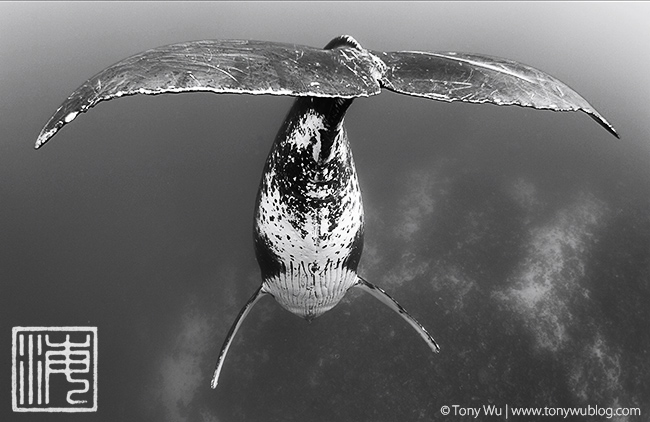
Only the second one I’ve seen this season (largely because we’ve been so busy with other whales that I haven’t really been looking for singers), this singing cetacean was one of the most cooperative ones I’ve met.
It wasn’t too deep, somewhere between 15m and 20m at the fluke; it was stationary while singing, hanging in the classic head-down pose; and it didn’t move too far when it came up to breathe.
For context…singers aren’t always so obliging. Many swim as they sing, making it impractical to track them; others are so deep or in areas with such low visibility that you can’t find them; some stay down so long it gets mind-numbing boring; and others take off at first hint of pesky people.
This was an accommodating singer, one that many boats had an opportunity to enjoy.
Anyway, to give you an idea of how nice this singer-situation was, here is a video that my friend Michael took of me making a social call to the above-pictured crooning cetacean (you may need to click through to the web page to see the video if you are reading this via email).
Humpback Whale Singer, Tonga from Tony Wu on Vimeo.
I wasn’t aware that Michael was taking the video, which explains why it came out so well. Had I known, I probably would’ve flubbed the dive, come up in the wrong place, or done something else inexplicably boneheaded. I’m good at that.
Another memorable encounter in recent days was a brief interlude with a male and female humpback engaged in courtship. They were preoccupied and didn’t really slow down to interact with us (as they sometimes will do), but it was still a moving experience.
In my opinion, courtship couples engage in the most beautiful of humpback whale displays. Heat runs are all about power, testosterone, and chest-thumping; courtship is about grace, elegance, emotion.
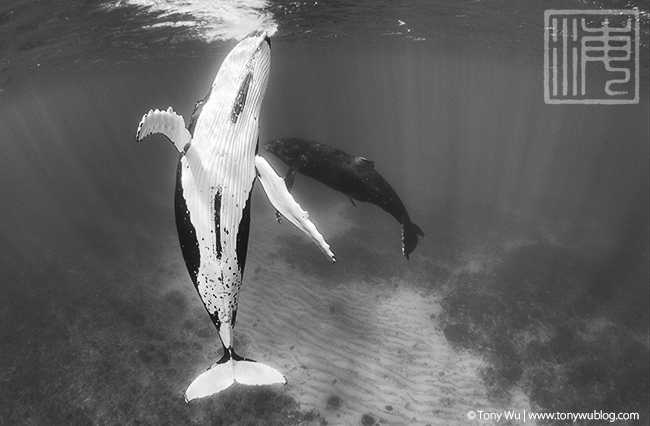
My calf count stands at 31 calf IDs now. I’ve ID-ed 30 of them, over a period of 25 boat-days. That’s a ratio of 1.2, up slightly from my count as of Part 4 of my updates from Tonga this season.
Of the 31, there are 12 males, 11 females and 8 unknown. Having started the season off with a massive deficit at the beginning of the season, male calves are currently in the lead. I’ve never ended a season with more males ID-ed then females. We’ll see how the tally turns in the coming days.
I’ve had a few days of rest during the past couple of weeks, and have also been out on the water when I wasn’t in full control of the boat I was on. During those days, I’ve seen and photographed more calves, but I have not included those in my count, as the methodology would be inconsistent.
Though I can’t perform transects, I can and do adhere to a consistent methodology in order to make season-to-season comparisons as apples-to-apples as possible.
In any event, at this point in the season, I am 99.999% confident stating that there are more humpback whales here than at any other time in the past 13 seasons. My calf-count figures demonstrate this numerically, and the numbers are consistent with firsthand observation by me and anyone else who has been here and out on the water for any appreciable amount of time.
I’m pretty sure that this is the best humpback whale season in Tonga ever.
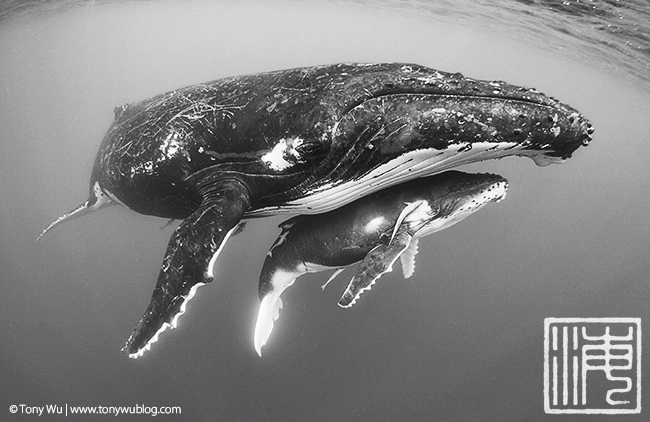
With so many calves around, there is much to observe…many clues to decipher, stories to interpret, dramas to narrate.
The female and calf 201428 (male) above, for instance, appear normal at first glance. My initial encounter with this pair was on 3 September, when they were accompanied by an escort. The trio were active, so I only managed to get a few in-water photographs, some of which showed significant scarring on both sides of the calf, between the dorsal and caudal areas.
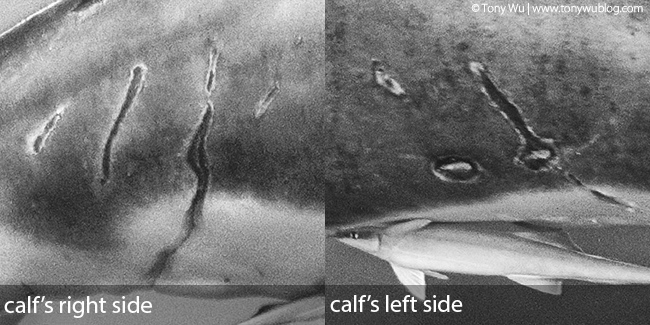
Unable to figure out what the wounds were, I posted the above jpgs to Facebook and Twitter asking for opinions. I received a lot of helpful feedback (thank you!), the bulk of which suggested a boat prop as being the possible cause.
Boat strikes are (much too) common around the world, so a prop hit was certainly possible, but I had difficulty wrapping my mind around how a boat propellor could slice both sides of a calf at the same time.
Three days later, I figured it out.
On 5 September, we met the mother/ calf pair again. On this occasion, they were without escort and completely settled. With more observation time, I saw that the primary wound extended all the way around the calf’s abdomen.
Bingo! I’m as certain as I can possibly be without witnessing the actual event/ cause of the injury that the calf’s wounds resulted from entanglement in a line or rope of some sort.
Given the adult humpback that was entangled in a longline earlier in the season (see Part 2), I probably should’ve thought of this right away.
Phil Colla, whose work I’ve long admired, was the first to suggest this as a possibility. His brain is obviously not as addled as mine.
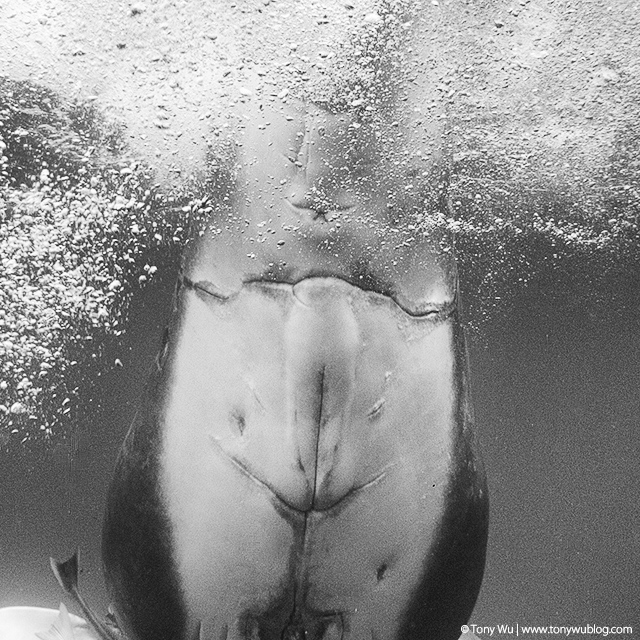
A couple of exciting (for me at least) updates from my previous post (Part 4)…I had another brief encounter with calf 201421 on 4 September, the skinny little runt that likes to swim far away from his mom. Calf and mom had an escort with them this time, unlike during our first meeting 10 days earlier.
The calf was as energetic and independent as before, swimming far, far away from mom, exploring the world around him with abundant curiosity and stamina. Recall that this calf is wounded as well, on the left side (not visible in the photo below). My speculation from looking at my photos is that the wound is from a large bite. I can’t help but root for this plucky, undersized calf’s success.
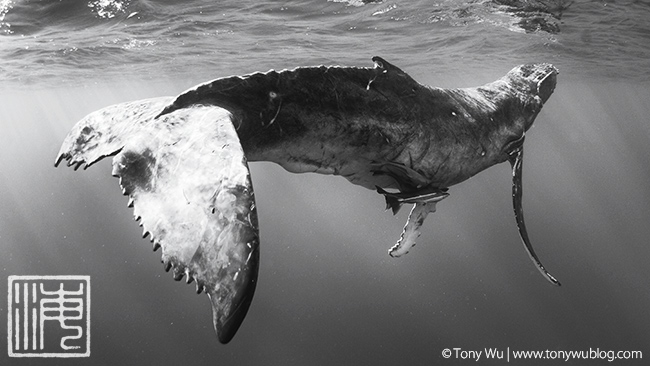
I discussed calf 201405 at some length in my previous post. Shortly after writing about her, I spent a bit of time staring at calf photos on my laptop. Something about calf 201405’s mother had nagged at me for several days, and I finally had time and energy to check it out.
Turns out…the mother of calf 201405 (female) is also the mother of calf 201114 (male)!
Some background…Calf 201114 is Tahafa, a very special calf. He was mauled by something(s) in 2011, but survived to become a plump, healthy young male by the end of that season. I documented his story at length in my blog posts during August and September 2011.
In summary, I encountered him nine times over the course of 33 days, watching him grow from a shy, wounded baby to a confident young boy. His mother was wary at first (perhaps due to the incident that led to her calf being attacked), but by the end of the 33 days, she was completely comfortable whenever I approached.
By comparison, I’ve met calf 201405 three times this season, over a span of 19 days. Mom’s appearance and demeanor are what prodded me to look into the possibility of a match.
The intangible similarity in behaviour of the adult female in 2011 and this season underscores my belief that humpbacks have consistent personalities, just like people. In previous seasons, the mother of 200913 (female) and 201232 (female) also demonstrated a consistent temperament that I recognised immediately.
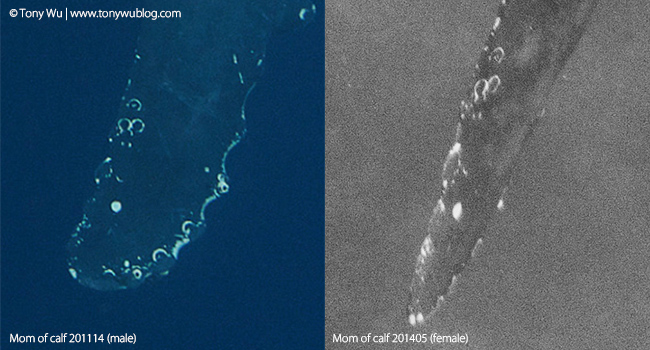
For additional background reading, here are the pertinent pages from my 2011 calf count summary relating to the saga of Tahafa, calf 201114, and here is a link to my post with my full report for the 2011 humpback season.
This now makes five females I’ve photo-confirmed with babies here in two separate seasons, and one super-mommy with babies here in six seasons.
That’s it for now. It’s a nice day, and I’m going to curl up with a book to relax, recover, and renew myself for days at sea that lie ahead.
A few photos to wrap-up this post:
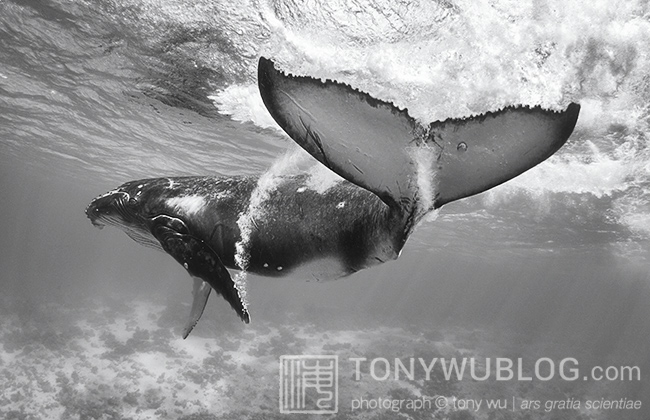
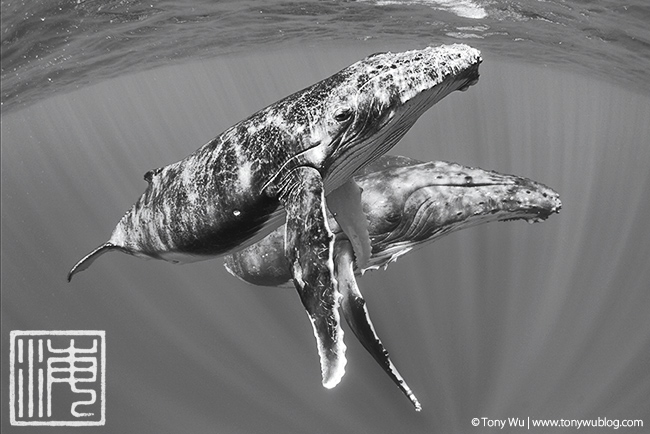
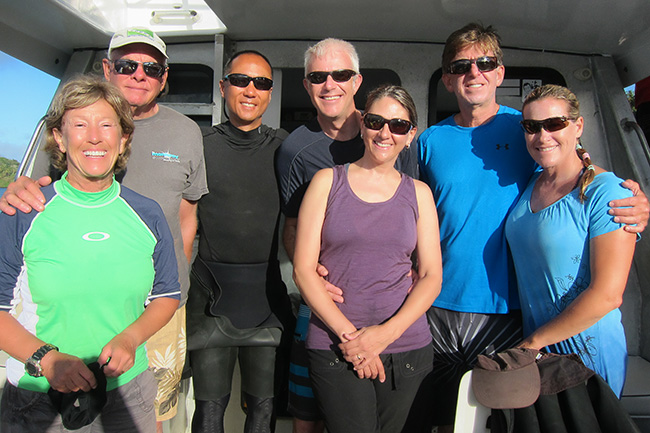
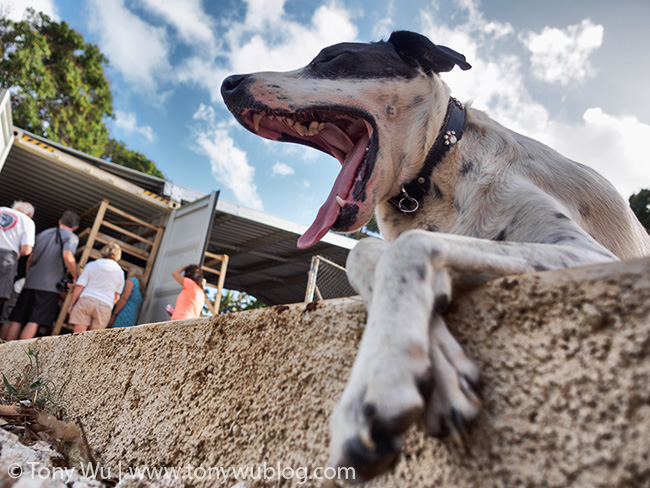
Related Posts:
Humpback Whales in Tonga 2014 | Part 1
Humpback Whales in Tonga 2014 | Part 2